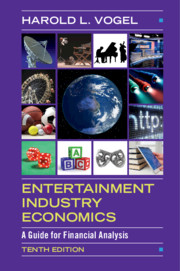Book contents
- Entertainment Industry Economics
- Entertainment Industry Economics
- Copyright page
- Dedication
- Contents
- Preface
- Part I Introduction
- Part II Media-Dependent Entertainment
- Part III Live Entertainment
- 11 Gaming and Wagering
- 12 Sports
- 13 Performing Arts and Culture
- 14 Amusement/Theme Parks
- Part IV Roundup
- Book part
- Glossary
- References
- Index
- References
13 - Performing Arts and Culture
from Part III - Live Entertainment
Published online by Cambridge University Press: 26 June 2020
- Entertainment Industry Economics
- Entertainment Industry Economics
- Copyright page
- Dedication
- Contents
- Preface
- Part I Introduction
- Part II Media-Dependent Entertainment
- Part III Live Entertainment
- 11 Gaming and Wagering
- 12 Sports
- 13 Performing Arts and Culture
- 14 Amusement/Theme Parks
- Part IV Roundup
- Book part
- Glossary
- References
- Index
- References
Summary
This chapter reviews the major segments of performing arts. These include commercial theater productions, orchestras, dance, and opera, The coverage extends to art markets and museums and to financing and economic aspects.
- Type
- Chapter
- Information
- Entertainment Industry EconomicsA Guide for Financial Analysis, pp. 533 - 570Publisher: Cambridge University PressPrint publication year: 2020

